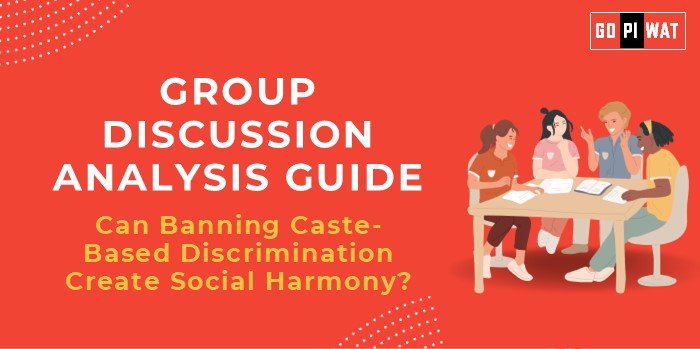⚖️ Can Banning Caste-Based Discrimination Create Social Harmony?
🌟 Introduction to the Topic
Caste-based discrimination is a deeply entrenched issue in India’s social fabric, despite legal prohibitions. While banning discrimination offers a foundational step toward equality, achieving true social harmony involves addressing systemic biases, economic inequalities, and cultural attitudes. This discussion explores the role of legal frameworks alongside complementary social reforms.
📊 Quick Facts and Key Statistics
- 👥 Population Impact: Scheduled Castes (SCs) and Scheduled Tribes (STs) comprise 25% of India’s population but face disproportionate socio-economic disadvantages.
- 🎓 Education Gap: Only 8% of Dalits achieve higher education compared to 25% of upper-caste individuals.
- ⚒️ Employment Disparity: Lower-caste groups are overrepresented in manual labor and face higher unemployment rates.
- 📈 Rising Crime Rates: Crimes against lower-caste individuals increased by 5% in 2022, highlighting persistent discrimination.
🤝 Stakeholders and Their Roles
- 🏛️ Government: Enacts anti-discrimination laws and implements reservation policies to promote equality.
- 🏫 Educational Institutions: Facilitate access to opportunities for marginalized groups through reservations while fostering inclusivity.
- 🏢 Corporations: Drive diversity, equity, and inclusion (DEI) initiatives to reduce workplace biases.
- 🌍 Civil Society: Advocates for equitable rights and raises awareness through grassroots campaigns.
📈 Achievements and Challenges
✅ Achievements
- 🎯 Reservation Policies: Increased representation of underprivileged castes in education and public sector jobs.
- 📜 Legal Protections: Strengthened laws like the SC/ST Prevention of Atrocities Act to deter caste-based violence.
- 🤝 Corporate Initiatives: Companies are increasingly adopting DEI frameworks, promoting caste diversity in hiring and leadership.
⚠️ Challenges
- 🔄 Entrenched Biases: Deep-rooted caste prejudices persist, affecting integration in workplaces and communities.
- 📉 Economic Inequalities: Socio-economic mobility remains limited for lower-caste groups, perpetuating disparities.
- 🌎 Global Comparisons: The U.S. Civil Rights Movement demonstrates that legal progress must be complemented by societal and cultural reforms.
🔮 Structured Arguments
- ✅ Supporting Stance: “Banning caste-based discrimination establishes a legal foundation for equality, paving the way for broader social harmony.”
- ❌ Opposing Stance: “Legal measures alone are insufficient; entrenched biases require cultural, educational, and economic reforms.”
- ⚖️ Balanced Perspective: “While legal bans are essential, true social harmony demands a multi-pronged approach involving legal, economic, and cultural initiatives.”
📄 Conclusion
Legal bans on caste-based discrimination are a vital step in addressing inequities, but they cannot work in isolation. Achieving social harmony requires a holistic approach that includes robust educational reforms, targeted economic policies, and efforts to shift societal attitudes. Drawing from global examples like the U.S., India can balance legal frameworks with cultural transformation to create an inclusive and equitable society.
📄 Source: Group Discussion Analysis Guide, 2024


